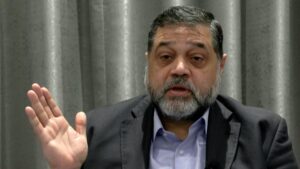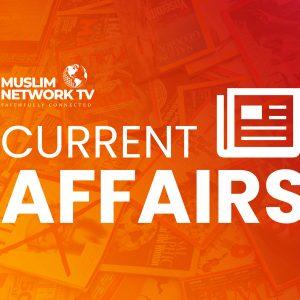Inside the mind of Hüseyin Oruç: Mediator who negotiated peace in Philippines Bangsamoro
In an exclusive interview with MNTV, Oruç shared his insights into the delicate dance of peacebuilding, the challenges of mediating in conflict zones, and why he believes dialogue and trust are more potent than any arsenal
By Iftikhar Gilani
ANKARA, Turkiye (MNTV) In a world where peace often seems elusive, Hüseyin Oruç, Vice President of the Turkish NGO IHH or Humanitarian Relief Foundation, has mastered the art of turning conflict into cooperation.
His efforts have helped transform Bangsamoro, a once war-torn region of the Philippines, into a beacon of hope and autonomy.
In an exclusive interview with MNTV, Oruç shared his insights into the delicate dance of peacebuilding, the challenges of mediating in conflict zones, and why he believes dialogue and trust are more potent than any arsenal.
This is his story, and the story of Bangsamoro’s journey from strife to self-governance.
Setting the Scene: The Rise of Bangsamoro
Bangsamoro, a region nestled in the southern Philippines, has long been a flashpoint of tension. For decades, the Moro Islamic Liberation Front (MILF) fought for independence, driven by a desire to protect the Islamic identity of their people in a predominantly Catholic country.
The conflict claimed over 50,000 lives, displaced a million, and forced over 100,000 to flee to neighboring Malaysia. This was not just a political struggle; it was a fight for survival and self-determination.
But in 2014, a historic peace agreement signaled a new beginning, which paved the way to the establishment of the Bangsamoro Autonomous Region in Muslim Mindanao (BARMM) in 2019, offering a glimmer of hope for lasting peace.
At the heart of this transformation was a man who spent most of his life in the shadows of conflict—Al Haj Murad Ebrahim, the former rebel turned chief minister of Bangsamoro.
But behind the scenes, another figure played a crucial role—Hüseyin Oruç, a Turkish mediator who brought a fresh perspective to the table.
The Making of a Peace Mediator
“Every conflict is unique,” Oruç begins, leaning back in his chair at his bustling office in Turkish capital Ankara.
His eyes carry the weight of decades spent in conflict zones, yet they also shine with hope.
When asked why a similar approach is not working in other places, be that Palestine or Kashmir, he said: “What works in one place might not work in another. But what remains constant is the need for dialogue and trust.”
Oruç’s journey to peace mediation was not a straight path. Born in Turkey, he joined the IHH in the early 1990s, drawn to its mission of humanitarian aid and conflict resolution.
The IHH, known for its work in war-torn regions and disaster areas, gained international attention in 2010 when its Gaza flotilla was attacked by Israeli forces.
The incident left nine dead and put the IHH in the global spotlight. “It was a defining moment,” Oruç recalls. “It showed us the risks involved in our work but also the importance of standing up for what is right.”
Bangsamoro: A Different Kind of War
The Bangsamoro conflict was different from the IHH’s previous engagements in places like Bosnia and Syria. “It wasn’t just about territory,” Oruç explains.
“It was about identity, about religion, about survival.”
The MILF, unlike many other insurgent groups, did not start with the aim of armed conflict. Their initial goal was to achieve substantial reforms within the people.
“They educated people in the forests,” Oruç says, “teaching them about life, about Islamic values. Their most significant success was not on the battlefield but in the hearts and minds of their people.”
This deep-rooted connection to their identity made the peace process both challenging and hopeful. The MILF’s demands were not just political; they were existential.
Turning Point: 2014 Peace Agreement
The road to peace was long and winding, marked by setbacks and breakthroughs.
“The first negotiations started back in 1997,” Oruç says.
“But it wasn’t until 2014 that we saw a real breakthrough.” That year, after years of negotiation, the Comprehensive Agreement on the Bangsamoro was signed. It laid the foundation for a new era of governance and autonomy for the region.
The peace treaty was a landmark moment, not just for Bangsamoro but for the world. It showed that even the most intractable conflicts could be resolved through dialogue.
“It was a moment of hope,” Oruç recalls. “A sign that peace was possible, even in the most unlikely of places.”
Trust: The Invisible Bridge
“Trust was the key,” Oruç emphasizes. Building trust in a landscape of distrust was no easy feat. The Philippine government, wary of foreign influence, conducted thorough investigations into IHH’s background.
“They sent a special delegation to Turkey,” Oruç says with a chuckle. “They wanted to make sure we were who we said we were.”
The IHH’s extensive work in conflict zones and its reputation for neutrality helped earn the trust of both the government and the MILF. “We were not there to take sides,” Oruç insists.
“We were there to facilitate, to help both sides find common ground.”
Inside the Negotiation Room: The Art of Dialogue
Negotiating peace is like dancing on a knife’s edge. One wrong step, and everything could fall apart. “Patience is crucial,” Oruç explains.
“You have to listen more than you talk. Understand more than you speak.” The negotiations were held in Kuala Lumpur, with Malaysia playing a key role as a facilitator.
Over 60 sessions were held, each one a step closer to peace. The discussions were intense, covering everything from financial autonomy to security arrangements. “It was about finding a balance,” Oruç says.
“How much control does the central government retain? How much autonomy is granted to the region? These were not easy questions.”
Challenges Along the Way: Changing Political Winds
The peace process faced numerous challenges, not least of which was a change in political leadership in the Philippines.
In 2022, a new government came to power, and with it, new uncertainties.
“Every new administration brings its own challenges,” Oruç admits. “There were fears that the new government might not honor the agreements made by its predecessor.”
But despite the changing political landscape, the commitment to peace remained strong. “The process has slowed, yes,” Oruç acknowledges. “But it hasn’t stopped. There is still hope.”
The Bangsamoro Organic Law: A New Dawn
The peace negotiations culminated in the drafting of the Bangsamoro Organic Law, a comprehensive agreement that laid the legal groundwork for the new autonomous region.
“This was not just a piece of paper,” Oruç stresses. “It was a recognition of the Bangsamoro people’s rights, their identity, their history.”
The law devolved significant powers to the region, including control over local resources and finances.
“It was about giving the people of Bangsamoro a say in their future,” Oruç explains. “About allowing them to benefit from their land’s wealth.”
From Conflict to Cooperation: The Impact of Peace
The impact of peace in Bangsamoro has been profound.
“You can see the changes on the ground,” Oruç says with a smile.
“New schools, hospitals, infrastructure projects. Welfare programs that are transforming lives.” The region, once synonymous with conflict, is now a symbol of hope.
The Bangsamoro police force, a product of the peace agreement, works alongside national security forces to maintain stability.
“It’s not perfect,” Oruç admits. “There are still challenges. But we are on the right path.”
Learning from Bangsamoro: Lessons for the World
The success of the Bangsamoro peace process offers valuable lessons for other conflict zones around the world.
“Every conflict is different,” Oruç reiterates. “But the principles of dialogue, trust, and mutual respect are universal.”
He points to other regions, like Palestine and Jammu and Kashmir, where peace remains elusive. “It’s easy to lose hope,”
Oruç says. “But Bangsamoro shows us that even the most intractable conflicts can be resolved. It’s about patience, persistence, and the willingness to find common ground.”
Role of Civil Society: Beyond Government Diplomacy
One of the unique aspects of the Bangsamoro peace process was the role played by civil society organizations like the IHH. “We don’t have armies,” Oruç points out.
“We don’t have political power. But we have something just as important—credibility, trust, and a genuine commitment to peace.”
The IHH’s involvement in Bangsamoro, and its broader work in places like Afghanistan and Syria, highlights the crucial role that NGOs can play in conflict resolution.
“We are not there to dictate terms,” Oruç insists. “We are there to listen, to understand, to help build bridges.”
Looking Ahead: The Future of Bangsamoro
As Bangsamoro continues its journey towards peace and prosperity, the challenges remain.
“Peace is not a one-time event,” Oruç cautions. “It’s a process, a continuous effort.”
The region still faces issues of poverty, underdevelopment, and sporadic violence. But the foundations for a brighter future have been laid. “The people of Bangsamoro have shown incredible resilience,” Oruç says with admiration.
“They have chosen peace over conflict, dialogue over violence. It’s a choice that will shape their future.”
A Personal Reflection: Why Oruç Keeps Going
After decades spent in conflict zones, why does Oruç continue? “It’s simple,” he says. “Every life saved, every conflict eased, makes it worth it.”
For Oruç, peace is not just an ideal; it’s a mission. “We live in a world where violence and conflict are all too common,” he says.
“But I have seen the power of dialogue, the strength of trust. I believe in the possibility of peace.”
His work with the IHH is driven by a deep-seated belief in the value of every human life. “We are not just mediators,” Oruç insists.
“We are humanitarians. Our mission is to bring hope where there is despair, light where there is darkness.”
A Message of Hope
As our interview draws to a close, Oruç offers a message of hope.
“Bangsamoro is a testament to what can be achieved through dialogue, trust, and cooperation,” he says.
“It’s a reminder that even in the darkest of times, there is always hope.”
His words resonate not just for Bangsamoro but for the world. In a time of uncertainty and conflict, the story of Bangsamoro—and the role of people like Oruç—offers a beacon of hope. It is a story of transformation, of resilience, of the power of peace. And it is a story that the world needs to hear.










